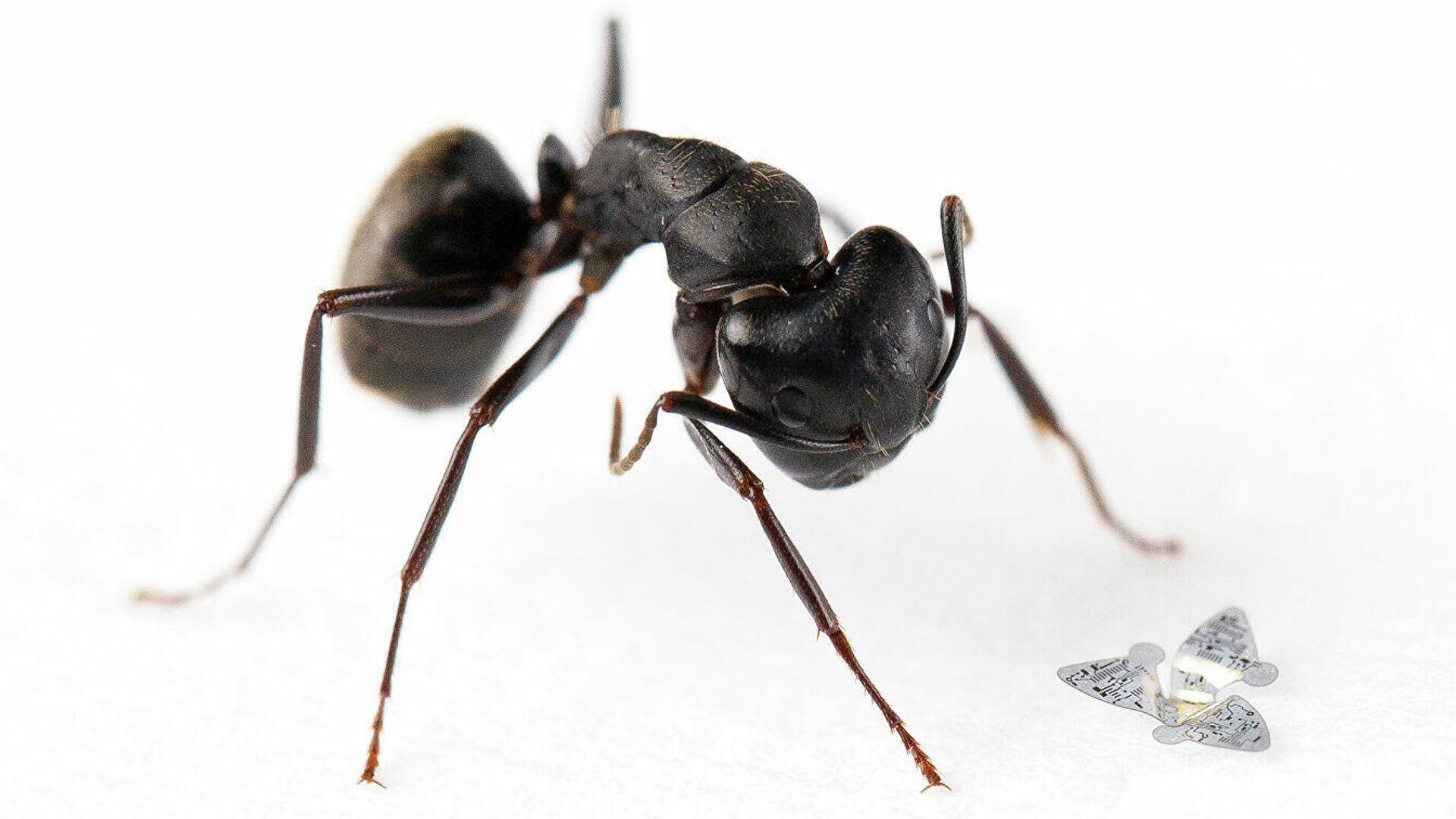https://sputnikglobe.com/20210923/scientists-create-winged-microchip-that-is-smallest-ever-human-made-flying-structure-1089323400.html
Scientists Create Winged Microchip That is Smallest-Ever Human-Made Flying Structure
Scientists Create Winged Microchip That is Smallest-Ever Human-Made Flying Structure
Sputnik International
The engineers built the microchip by taking inspiration from aerodynamic patterns available in nature. It can also be used with sensors, power sources, and... 23.09.2021, Sputnik International
2021-09-23T09:01+0000
2021-09-23T09:01+0000
2023-04-21T10:42+0000
innovation
microchip
engineers
science & tech
https://cdn1.img.sputnikglobe.com/img/07e5/09/17/1089325329_206:368:1550:1124_1920x0_80_0_0_8e04a82dcf80642d6d93de77fa0aafd4.jpg
A team of engineers from Northwestern University has created the world's smallest flying electronic microchip (AKA microflier) ever made by a human. The chip, which does not have a motor or engine, is the size of a grain of sand and flies with the help of wind. The engineers mimicked the aerodynamics of maple trees and other types of wind-dispersed seeds and made sure that if it drops from a high elevation it will fall in a controlled way, helping the microflier to have a stabile flight and increase the duration of its interaction with the air. According to the innovators, this increased duration will make the chip ideal for air pollution and airborne disease monitoring. Rogers and his team designed and built different types of microfliers and one of them had three wings just like those found on a tristellateia seed. Yonggang Huang, the Jan and Marcia Achenbach Professor of Mechanical Engineering at Northwestern who led the study's theoretical work, monitored the full-scale computational modelling of how the air flows around the device to achieve the rotational motion like tristellateia seeds.The microchip has two parts: millimetre-sized electronic functional components and their wings. When the microflier begins to fly, its wings interact with the air to create a rotational motion. Interestingly, the weight of the chip is distributed in such a manner that it will prevent it from losing control or falling to the ground. The research is featured in the latest issue of the journal Nature that came out on 23 September.
Sputnik International
feedback@sputniknews.com
+74956456601
MIA „Rosiya Segodnya“
2021
Sushmita Panda
https://cdn1.img.sputnikglobe.com/img/07e5/05/12/1082926186_0:0:2048:2048_100x100_80_0_0_4474d0d7e27a36878eb8727832be74b4.jpg
Sushmita Panda
https://cdn1.img.sputnikglobe.com/img/07e5/05/12/1082926186_0:0:2048:2048_100x100_80_0_0_4474d0d7e27a36878eb8727832be74b4.jpg
News
en_EN
Sputnik International
feedback@sputniknews.com
+74956456601
MIA „Rosiya Segodnya“
Sputnik International
feedback@sputniknews.com
+74956456601
MIA „Rosiya Segodnya“
Sushmita Panda
https://cdn1.img.sputnikglobe.com/img/07e5/05/12/1082926186_0:0:2048:2048_100x100_80_0_0_4474d0d7e27a36878eb8727832be74b4.jpg
innovation, microchip, engineers, science & tech
innovation, microchip, engineers, science & tech
Scientists Create Winged Microchip That is Smallest-Ever Human-Made Flying Structure
09:01 GMT 23.09.2021 (Updated: 10:42 GMT 21.04.2023) The engineers built the microchip by taking inspiration from aerodynamic patterns available in nature. It can also be used with sensors, power sources, and antennas for wireless communication. It can additionally store data when embedded with memory networks.
A team of engineers from Northwestern University has created the world's smallest flying electronic microchip (AKA microflier) ever made by a human. The chip, which does not have a motor or engine, is the size of a grain of sand and flies with the help of wind.
The engineers mimicked the aerodynamics of maple trees and other types of wind-dispersed seeds and made sure that if it drops from a high elevation it will fall in a controlled way, helping the microflier to have a stabile flight and increase the duration of its interaction with the air.
According to the innovators, this increased duration will make the chip ideal for air pollution and airborne disease monitoring.
"Our goal was to add a winged flight to small-scale electronic systems, with the idea that these capabilities would allow us to distribute highly functional, miniaturised electronic devices to sense the environment for contamination monitoring, population surveillance, or disease tracking. Over the course of billions of years, nature has designed seeds with very sophisticated aerodynamics. We borrowed those design concepts, adapted them, and applied them to electronic circuit platforms", said Northwestern's John A. Rogers, who led the device's development.
Rogers and his team designed and built different types of microfliers and one of them had three wings just like those found on a tristellateia seed.
Yonggang Huang, the Jan and Marcia Achenbach Professor of Mechanical Engineering at Northwestern who led the study's theoretical work, monitored the full-scale computational modelling of how the air flows around the device to achieve the rotational motion like tristellateia seeds.
The microchip has two parts: millimetre-sized electronic functional components and their wings. When the microflier begins to fly, its wings interact with the air to create a rotational motion. Interestingly, the weight of the chip is distributed in such a manner that it will prevent it from losing control or falling to the ground.
"We think that we beat nature. At least in the narrow sense that we have been able to build structures that fall with more stable trajectories and at slower terminal velocities than equivalent seeds that you would see from plants or trees. Device miniaturisation represents the dominating development trajectory in the electronics industry, where sensors, radios, batteries, and other components can be constructed in ever smaller dimensions", Rogers said.
The research is featured in the latest issue of the journal
Nature that came out on 23 September.





